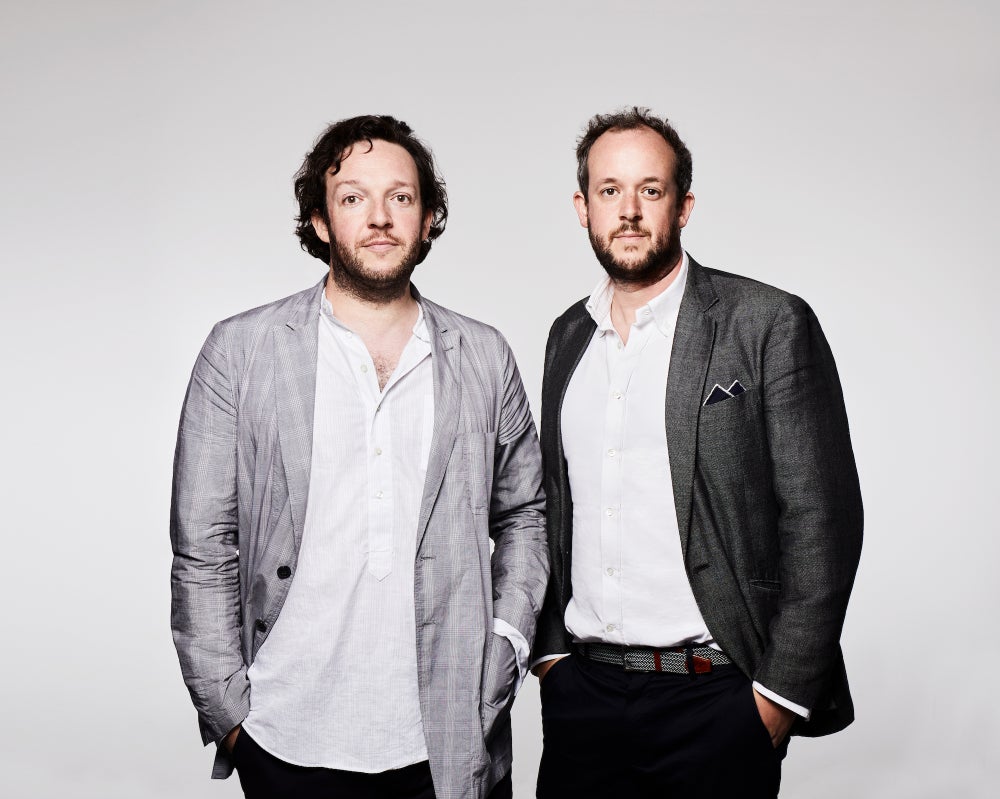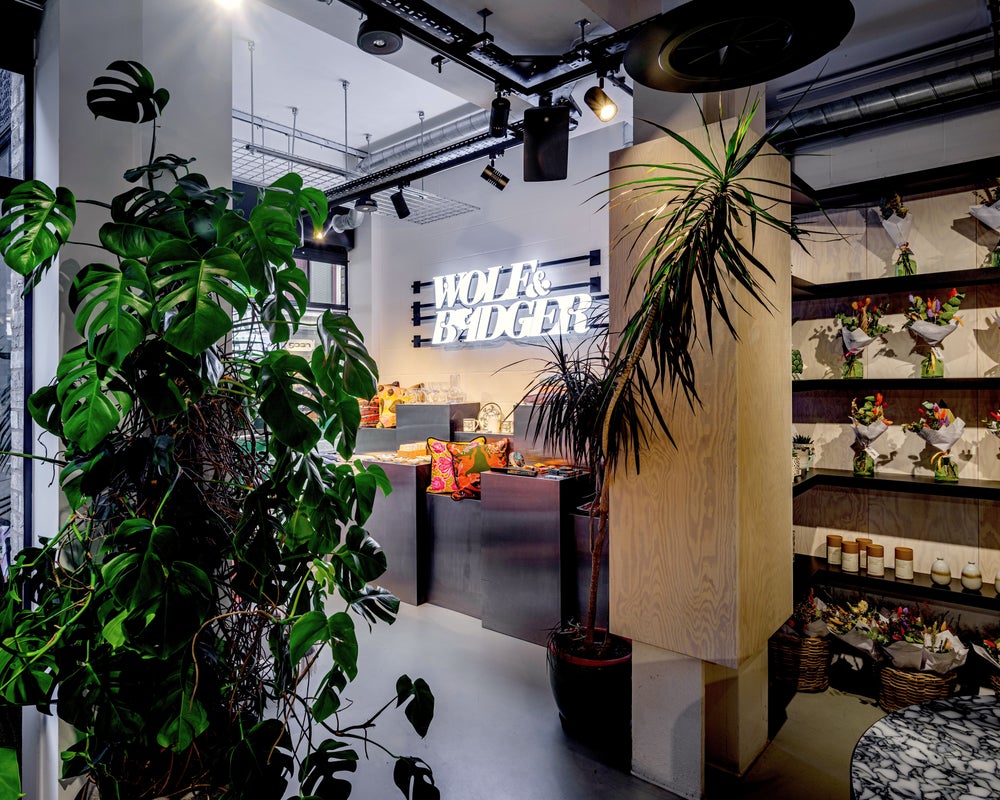Key Takeaways
- The brothers launched a retail marketplace to platform independent brands from around the globe.
- Wolf & Badger saw nearly $50 million in net revenue and reached over 77 million customers in 2024 alone.
Brothers George and Henry Graham recognized a mounting challenge for independent brands in the wake of the 2008 financial crisis: It was hard to reach customers and handle the logistics around cross-border trade. As consumers themselves, the siblings also struggled to find emerging designers and brands.

“It was very difficult to discover really interesting, unique, well-made, ethically produced products because boutiques were disappearing from the high streets, and department stores were playing it increasingly safe,” George Graham tells Entrepreneur.
The duo envisioned a platform where independent brands could gain much-needed exposure, so they created one: Wolf & Badger (named after two of their favorite animals — “We liked the sound of it, and it stuck,” Graham says).
Related: Siblings’ Tasty Side Hustle Became an ‘Extremely Rewarding’ Business Expecting $500,000 Revenue
With some pre-seed support from family and friends, the U.K.-based co-founders signed a lease in Notting Hill to open Wolf & Badger’s first physical retail space. The brands expressed interest from the beginning — and so did the customers, who appreciated the differentiated product selection and real stories behind every piece and collection, Graham recalls.

The brothers used that momentum to open another store in London — with help from angel investors in the form of customers, designers and brands — and launch their online business. Initially, Wolf & Badger’s digital retail business was an extension of the offerings carried in its brick-and-mortar locations. However, by 2014, the co-founders expanded the online brands beyond those available in the retail spaces, and the company continued to gain ground.
Wolf & Badger grew organically for years, then raised a growth capital round through a venture fund in 2019. To date, the company has raised about $13 million in addition to the roughly $5 million from early on, totaling just under $20 million in funds, Graham says.
“[It’s] certainly not a small amount of money by any means,” the co-founder notes, “but was significantly less than some others starting in our space — where they’d raised a bigger pot of capital early on, grown quite quickly and often not followed through [with sustainable growth] in the same way.”
Wolf & Badger saw nearly $50 million in net revenue from brand membership fees and sales commissions in 2024. The company currently platforms brands from around the world, facilitating 672,000 purchases for independent businesses to more than 77 million customers globally in 2024 alone, per the company.

“Building, retaining and motivating a great team is the biggest challenge.”
Over the years, Wolf & Badger’s most significant challenge has been finding the right people to work with and making those key hires, Graham acknowledges.
“I think most entrepreneurs and business leaders would agree that building, retaining and motivating a great team is the biggest challenge in scaling a business,” Graham says. “We’d be nowhere without the incredible team that we’ve been fortunate to work with and to build alongside over the past 15 years.”
Related: 5 Rules for Hiring When Great Job Candidates Are Scarce
Having a solid team in place has helped the business navigate other notable challenges, including Brexit, the pandemic, tariffs and more, Graham says.
Additionally, the co-founder notes that Wolf & Badger’s commitment to its original vision — creating a “fair and frictionless future for retail” and a dedicated platform for independent brands — helps the company weather any storm and come out stronger on the other side.

Another facet of that mission is Wolf & Badger’s sustainability pledge. The company achieved B Corp certification about five years ago, and its recently released 2025 Impact Report unpacks its efforts in cutting emissions, advancing circularity, supporting minority-owned labels and, of course, amplifying independent designers.
“[We] focus on putting people and the planet ahead of just profit.”
“[We] focus on putting people and the planet ahead of just profit,” Graham says. “It’s that values-driven way of building the business in the first place. It’s always been at the heart of what we do and allowed us to grow Wolf & Badger in a much more sustainable way — financially, environmentally and socially.”
Related: 5 Reasons to Become a Benefit Corporation
Today, Wolf & Badger has stores in London, Los Angeles and New York. The company plans to continue scaling rapidly in the U.S. market, which already makes up more than half (55%) of the company’s consumer purchases — translating to over $100 million in annual sales for independent brands.

Image Credit: Courtesy of Wolf & Badger
What’s more, the co-founders are getting creative to maintain a sustainable growth trajectory.
“We’re looking at some exciting pop-ups and activations over the coming months, partnering with more creators and influencers to help amplify the voice of independent brands on our platform,” Graham says. “We have a new tastemakers program that we launched, where those creators can tell the story of brands on our platform.”
Wolf & Badger is also considering joint venture and partnership opportunities in the Middle East and Asia as the company pursues new pathways for growth — and more consumers for independent brands.
Related: 10 Growth Strategies Every Business Owner Should Know
After more than a decade growing a successful retail marketplace that shows no signs of slowing down, Graham has some advice for young entrepreneurs who aspire to start an independent brand of their own: Pick a niche, stay focused, invite feedback and keep an open mind when it comes to new opportunities.
“ And, of course, if you are a brand that fits with our platform, then come and speak to us,” Graham says.
Key Takeaways
- The brothers launched a retail marketplace to platform independent brands from around the globe.
- Wolf & Badger saw nearly $50 million in net revenue and reached over 77 million customers in 2024 alone.
Brothers George and Henry Graham recognized a mounting challenge for independent brands in the wake of the 2008 financial crisis: It was hard to reach customers and handle the logistics around cross-border trade. As consumers themselves, the siblings also struggled to find emerging designers and brands.

“It was very difficult to discover really interesting, unique, well-made, ethically produced products because boutiques were disappearing from the high streets, and department stores were playing it increasingly safe,” George Graham tells Entrepreneur.
The rest of this article is locked.
Join Entrepreneur+ today for access.


